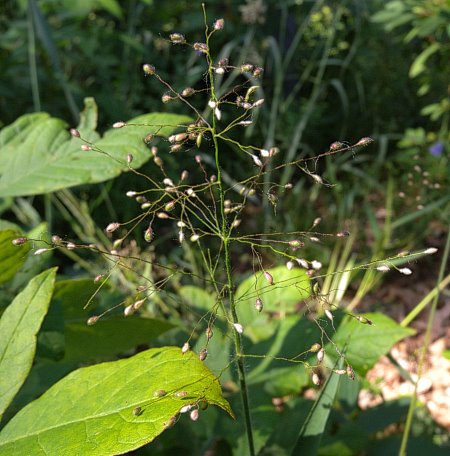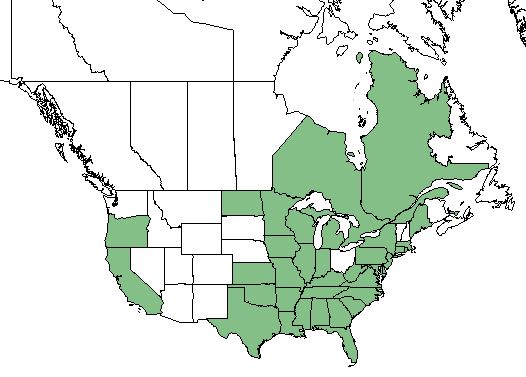Difference between revisions of "Dichanthelium villosissimum"
(→Description) |
(→Ecology) |
||
| Line 29: | Line 29: | ||
==Ecology== | ==Ecology== | ||
===Habitat=== <!--Natural communities, human disturbed habitats, topography, hydrology, soils, light, fire regime requirements for removal of competition, etc.--> | ===Habitat=== <!--Natural communities, human disturbed habitats, topography, hydrology, soils, light, fire regime requirements for removal of competition, etc.--> | ||
| − | < | + | ''D. villosissimum'' is found in dry sandy soils of open woodlands and prairies.<ref name="Weakley 2015"/> |
| + | |||
| + | ===Phenology=== <!--Timing off flowering, fruiting, seed dispersal, and environmental triggers. Cite PanFlora website if appropriate: http://www.gilnelson.com/PanFlora/ --> | ||
| + | Flowering and fruiting occur between April and September.<ref name="Weakley 2015"/> | ||
| + | |||
<!--===Seed dispersal===--> | <!--===Seed dispersal===--> | ||
<!--===Seed bank and germination===--> | <!--===Seed bank and germination===--> | ||
Revision as of 15:14, 7 December 2017
| Dichanthelium villosissimum | |
|---|---|

| |
| Photo by Illinois Wildflowers | |
| Scientific classification | |
| Kingdom: | Plantae |
| Division: | Magnoliophyta - Flowering plants |
| Class: | Liliopsida - Moncots or Magnoliopsida - Dicots |
| Order: | Poales |
| Family: | Poaceae |
| Genus: | Dichanthelium |
| Species: | D. villosissimum |
| Binomial name | |
| Dichanthelium villosissimum (Nash) | |

| |
| Natural range of Dichanthelium villosissimum from USDA NRCS Plants Database. | |
Common Name(s): white-haired witchgrass, whitehair rosette grass[1][2]
Contents
Taxonomic Notes
Variation(s): Dichanthelium villosissimum var. villosissimum; D. villosissimum var. praecocius[1][2]
Description
D. villosissimum is a monoecious perennial graminoid. [2]
Distribution
Ecology
Habitat
D. villosissimum is found in dry sandy soils of open woodlands and prairies.[1]
Phenology
Flowering and fruiting occur between April and September.[1]